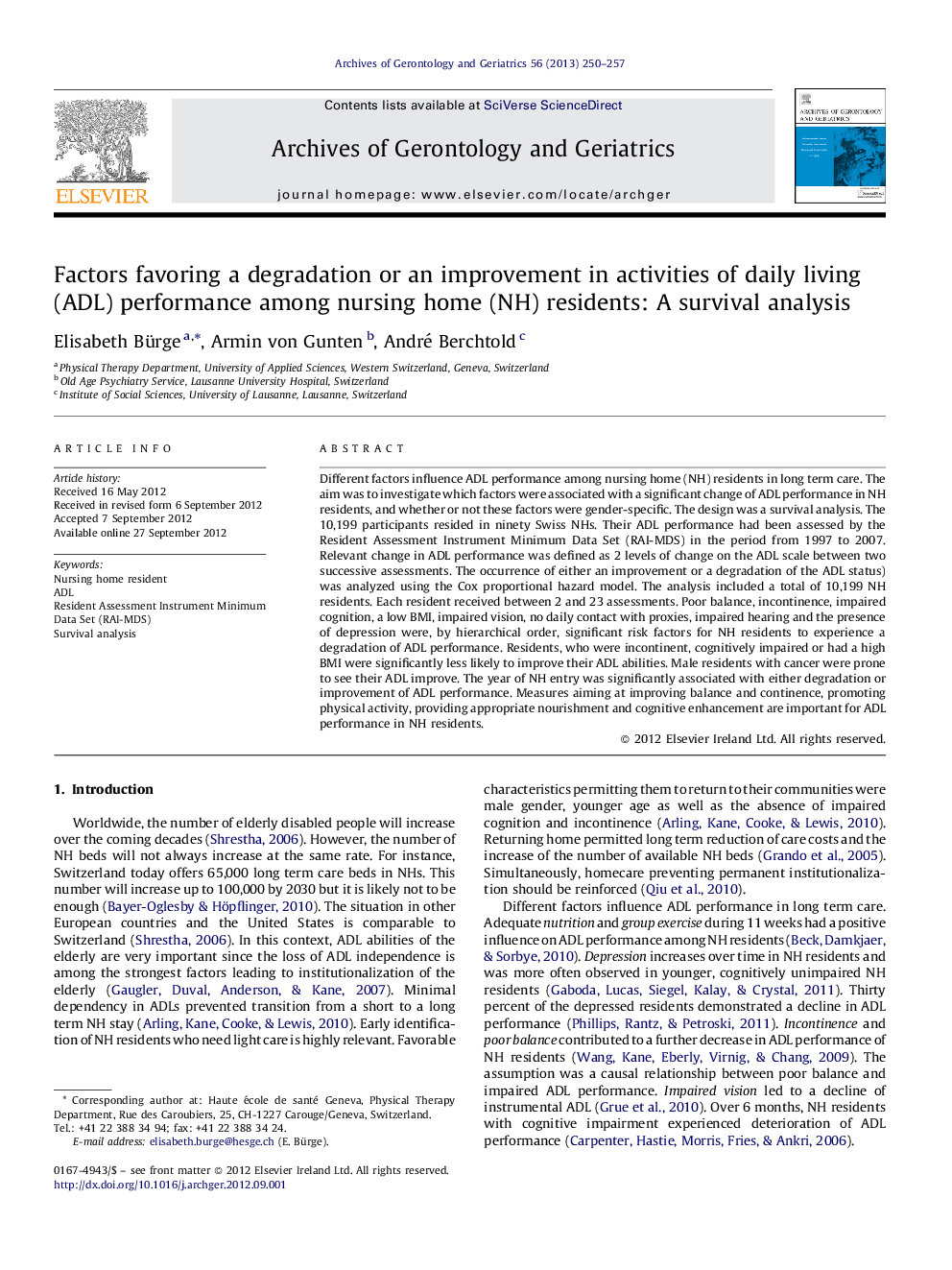| Article ID | Journal | Published Year | Pages | File Type |
|---|---|---|---|---|
| 8258160 | Archives of Gerontology and Geriatrics | 2013 | 8 Pages |
Abstract
Different factors influence ADL performance among nursing home (NH) residents in long term care. The aim was to investigate which factors were associated with a significant change of ADL performance in NH residents, and whether or not these factors were gender-specific. The design was a survival analysis. The 10,199 participants resided in ninety Swiss NHs. Their ADL performance had been assessed by the Resident Assessment Instrument Minimum Data Set (RAI-MDS) in the period from 1997 to 2007. Relevant change in ADL performance was defined as 2 levels of change on the ADL scale between two successive assessments. The occurrence of either an improvement or a degradation of the ADL status) was analyzed using the Cox proportional hazard model. The analysis included a total of 10,199 NH residents. Each resident received between 2 and 23 assessments. Poor balance, incontinence, impaired cognition, a low BMI, impaired vision, no daily contact with proxies, impaired hearing and the presence of depression were, by hierarchical order, significant risk factors for NH residents to experience a degradation of ADL performance. Residents, who were incontinent, cognitively impaired or had a high BMI were significantly less likely to improve their ADL abilities. Male residents with cancer were prone to see their ADL improve. The year of NH entry was significantly associated with either degradation or improvement of ADL performance. Measures aiming at improving balance and continence, promoting physical activity, providing appropriate nourishment and cognitive enhancement are important for ADL performance in NH residents.
Related Topics
Life Sciences
Biochemistry, Genetics and Molecular Biology
Ageing
Authors
Elisabeth Bürge, Armin von Gunten, André Berchtold,
